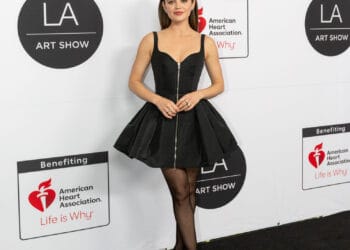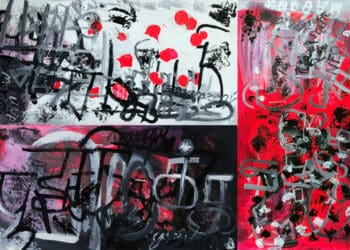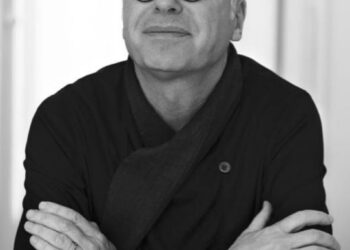From February 5-9, the LA Art Show hit its 25th Anniversary in the downtown LA Convention Center, representing 120 galleries from 18 different countries. As always, there was a strong showing of Chinese and Latin American artists, including Los Angeles based Latinos (or, Latinx, if you prefer).
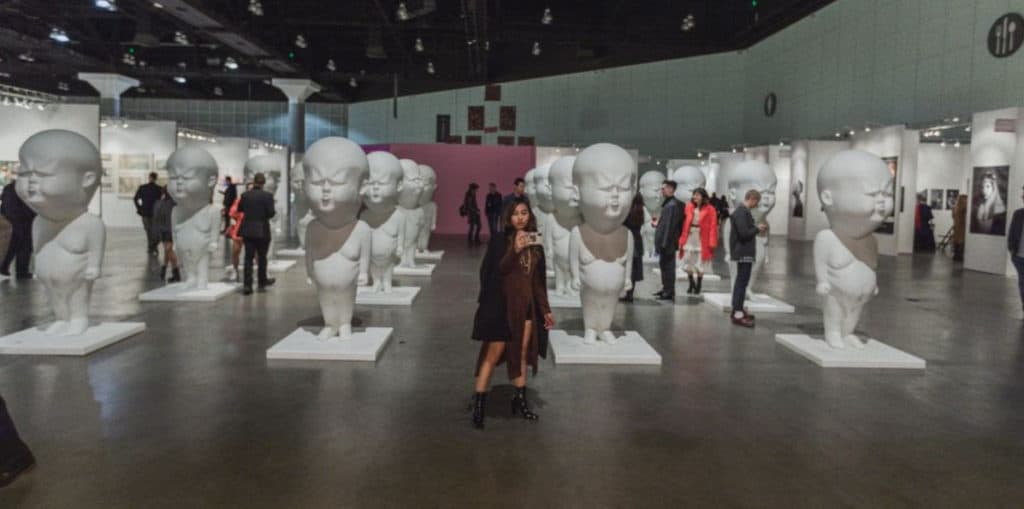
Opening night was fun. A performance artist named Miss Art World, presented by the nonprofit cooperative 825 Gallery, was one of the more colorful personalities, with a big blue bouffant, a dress like the topping of a cake, and her signature beauty queen sash that says, “Miss Art World,” of course.
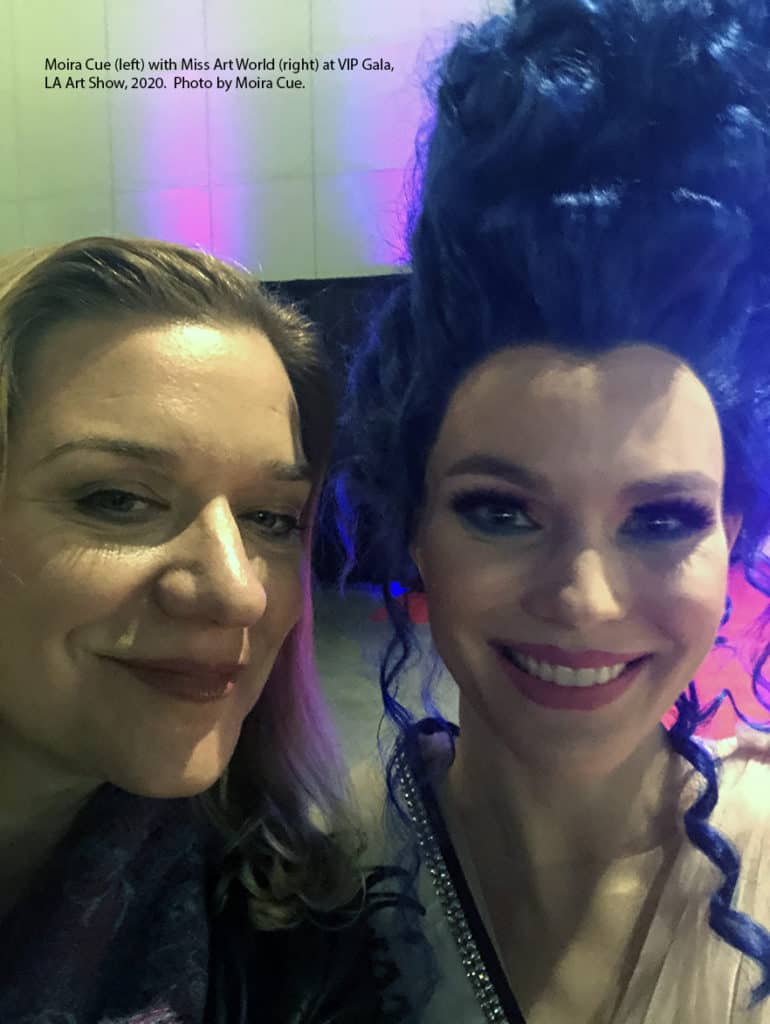
Cirque du Soleil performers looking like indigenous-inspired Super Mario brothers characters walked around on stilts, in weird color block mohawks.
Everyone wanted to take selfies or pictures of actress-model type women, and the ALPHACUBE by Lorenzo Marini (presented by Bruce Lurie Gallery) was busy all night with people taking advantage of the sculpture’s colorful interior, which made for a great wall-to-wall backdrop of blocks of letters. Give Los Angelenos a place to pose and they’ll love you forever. Or at least, they’ll post your work on social media that night.
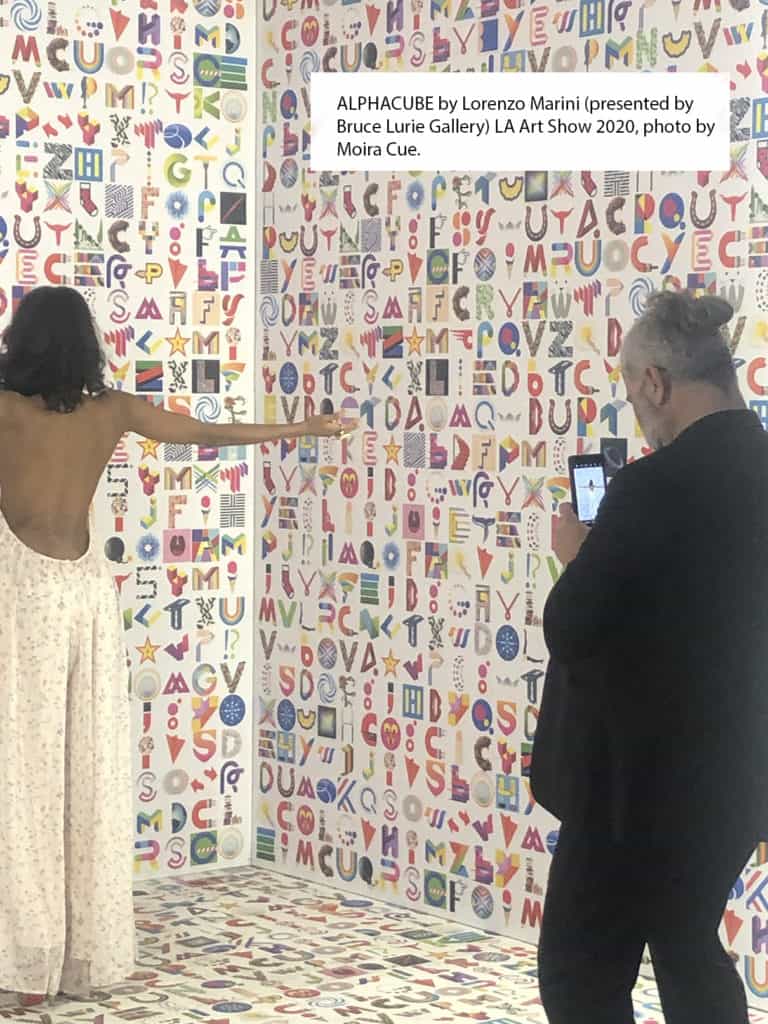
Browsing through one of the Chinese galleries on opening night, I was offered some strawberry hard candies, which I enjoyed. “They’re popular for Chinese New Year,” the gallerist explained. We started talking about Year of the Rat, whether it was good for Year of the Rabbit people or not, and she mentioned that it was a very unlucky year for many Chinese. Only later did I wonder if perhaps she was thinking about the coronavirus.
Art brings people together from all over the world. As one newbie wrote on Instagram, “Can I get season tickets?” There is so much to see, you literally can’t do it all.
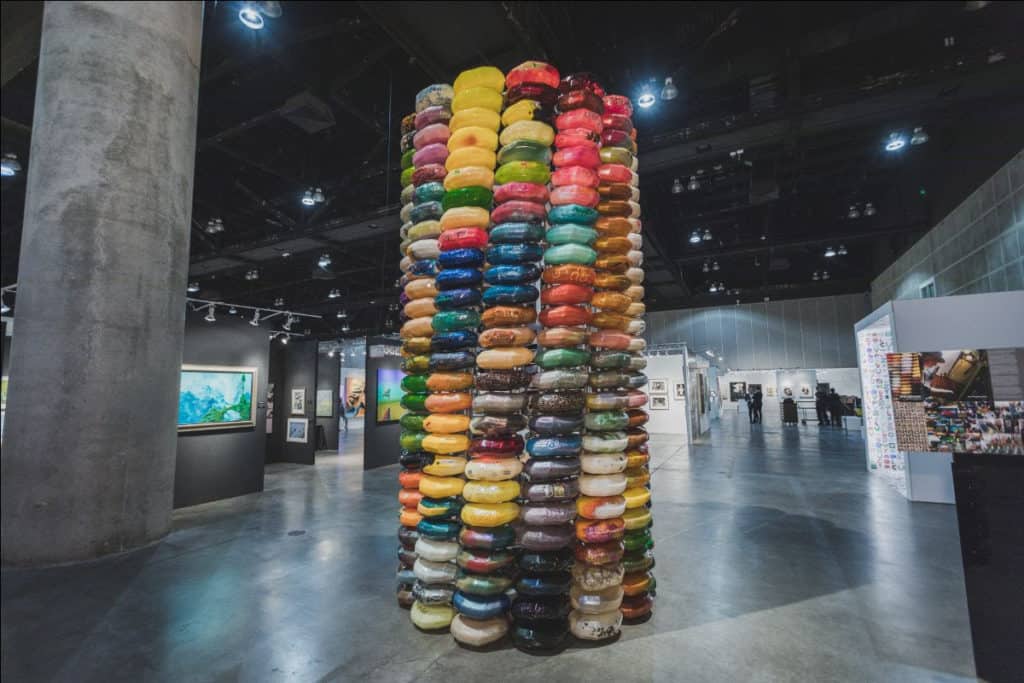 I returned to the Show on Saturday and enjoyed meeting the proprietor of the Wyoming Working Group. They have quite a story! The group owns more than 50 canvasses attributed to Jackson Pollack. Attributed to means that, they think they were made by Jackson Pollack but can’t prove it. Their struggle to establish provenance has raged on for decades. The work has many Pollack-like qualities, but it also feels different. The patterns are similar, but the work has a different palette and much lighter touch. My first gut reaction—from a distance—was that they were fake (“Oh weird,” I thought, “there’s a booth called Pollack’s Paradigm. Looks like someone is trying to recreate the Pollack style.” I thought it was like one of those workshops museums do for kids.)
I returned to the Show on Saturday and enjoyed meeting the proprietor of the Wyoming Working Group. They have quite a story! The group owns more than 50 canvasses attributed to Jackson Pollack. Attributed to means that, they think they were made by Jackson Pollack but can’t prove it. Their struggle to establish provenance has raged on for decades. The work has many Pollack-like qualities, but it also feels different. The patterns are similar, but the work has a different palette and much lighter touch. My first gut reaction—from a distance—was that they were fake (“Oh weird,” I thought, “there’s a booth called Pollack’s Paradigm. Looks like someone is trying to recreate the Pollack style.” I thought it was like one of those workshops museums do for kids.)
The explanation given for the work being hidden is that Pollack was going to have a major retrospective and had stashed away his “best stuff” in preparation for the show. Also, he was going through a divorce, and wanted to hide the work from his soon to be ex-wife and the dealers he no longer trusted. His untimely demise in an auto accident prevented the work from being released by the artist, the story goes. The work was allegedly gifted to an unknown girlfriend, one of several, allegedly, who sold the work cheaply. But there’s no proof a girlfriend other than Ruth Kligman existed. The work is interesting for the issues it raises about how an artist’s work is authenticated, and who gets to decide what is real and what isn’t. It’s a whole area of the art world that most artists don’t even think about when they’re alive. The Working Group has spent large amounts of money with scientific research to try to prove that the paintings are authentic. And whether they are or not, it’s a fascinating story and one they certainly seem to believe in.
But is it true? If it is, science will tell us, eventually. The Working Group claims fractal analysis backs them up; a quick Google search turns up articles both condemning fractal analysis as unreliable indicator of what is and isn’t a Pollack, and suggesting that new software is better—up to 93% accurate. The Group also claims to have one work with a fingerprint. A fingerprint, a hair, other DNA analysis would be tough to argue with. But the details of the fingerprint on the Group’s website are thin. And Pollack is the most forged post-war artist on earth. Even former members of the Pollack-Krasner Foundation’s authentication board have had public disagreements about other instances of post-humous attributions. To see the work in this collection and judge for yourself, click here: https://wyomingworkinggroup.com/book/#.Xk3ZRy2ZM_U
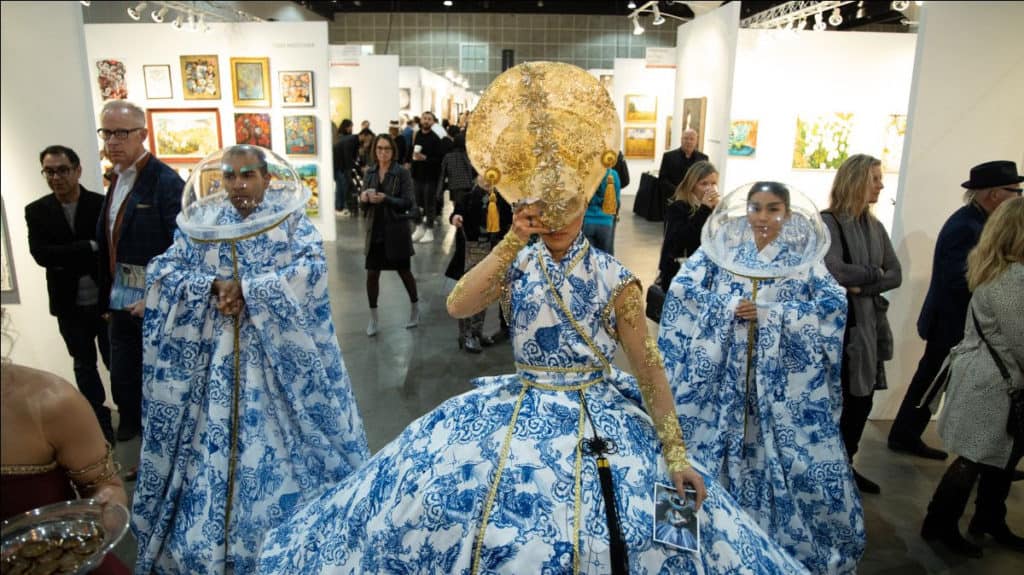 New discoveries, and sometimes new friendships, is what the LA Art Show is all about. At the KR Martindale Gallery, I had the fun experience of meeting an exhibiting artist, Guillermo Bert, whose work deals with complex social issues stemming from immigration, acculturation, and the Latinx community. He works with indigenous communities in Latin America as well as in Los Angeles, to create works that evoke lived experience through a mix of traditional symbols and contemporary technology (such as woven textile pieces where you can scan a QR code and hear first person narratives, or the videotaped stories of undocumented migrants projected in an installation of live tumbleweed). Most of Bert’s work is curated and displayed through museums rather than galleries; at the LA Art Show he brought smaller, collectable works like “Red States, Blue States, and White Lies,” a seemingly minimalist triptych of “laser, barcodes, and candy colors on Plexi” whose title betrays a conceptual punch.
New discoveries, and sometimes new friendships, is what the LA Art Show is all about. At the KR Martindale Gallery, I had the fun experience of meeting an exhibiting artist, Guillermo Bert, whose work deals with complex social issues stemming from immigration, acculturation, and the Latinx community. He works with indigenous communities in Latin America as well as in Los Angeles, to create works that evoke lived experience through a mix of traditional symbols and contemporary technology (such as woven textile pieces where you can scan a QR code and hear first person narratives, or the videotaped stories of undocumented migrants projected in an installation of live tumbleweed). Most of Bert’s work is curated and displayed through museums rather than galleries; at the LA Art Show he brought smaller, collectable works like “Red States, Blue States, and White Lies,” a seemingly minimalist triptych of “laser, barcodes, and candy colors on Plexi” whose title betrays a conceptual punch.

One of my favorite sections this year was INK. With mostly Chinese and Japanese artists from foreign and domestic galleries, the section explores calligraphy rooted in both traditional and experimental forms. The important, avant-garde calligraphy artist Yuichi Inoue was presented by Japanese gallery Zeal House. Shoen Tominaga, another important avant-garde calligrapher, whose work inhabits the spaces of painting and writing, was presented by S.E.A. (Los Angeles and Tokyo).
I particularly enjoyed seeing work by Yang Xiaojian presented by the Shanghai based COSPACE Gallery. These works synthesize an Eastern, calligraphic-based sensibility with the Western painterly tradition; Chinese characters are imbued with weight and and a cartoonish heft like the objects in a later Philip Guston painting. This work, by itself, was worth the trip.
–Moira Cue
Moira Cue is an award winning artist, singer, and actress whose works are in collections worldwide.
©2020 Hollywood Sentinel



